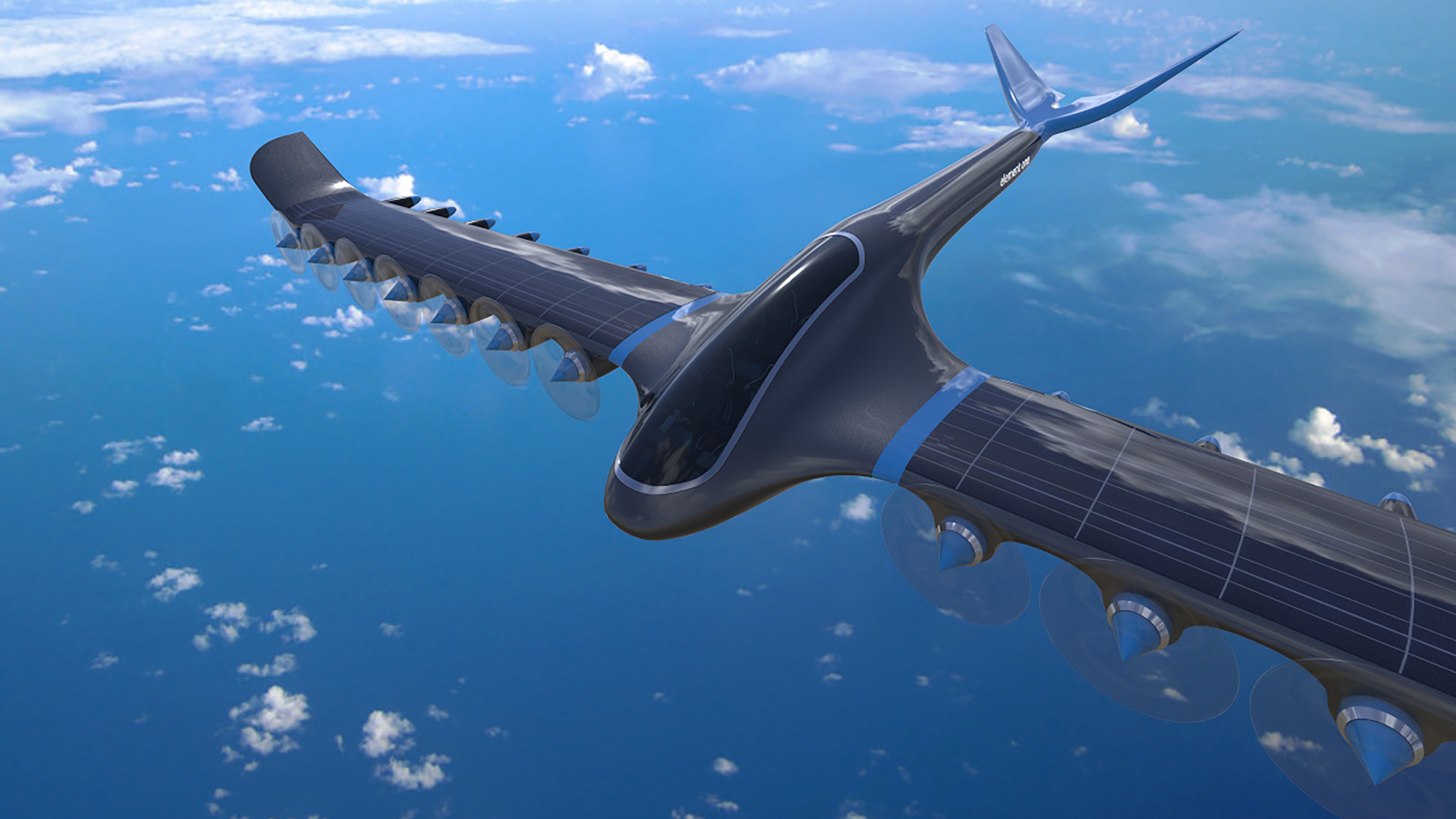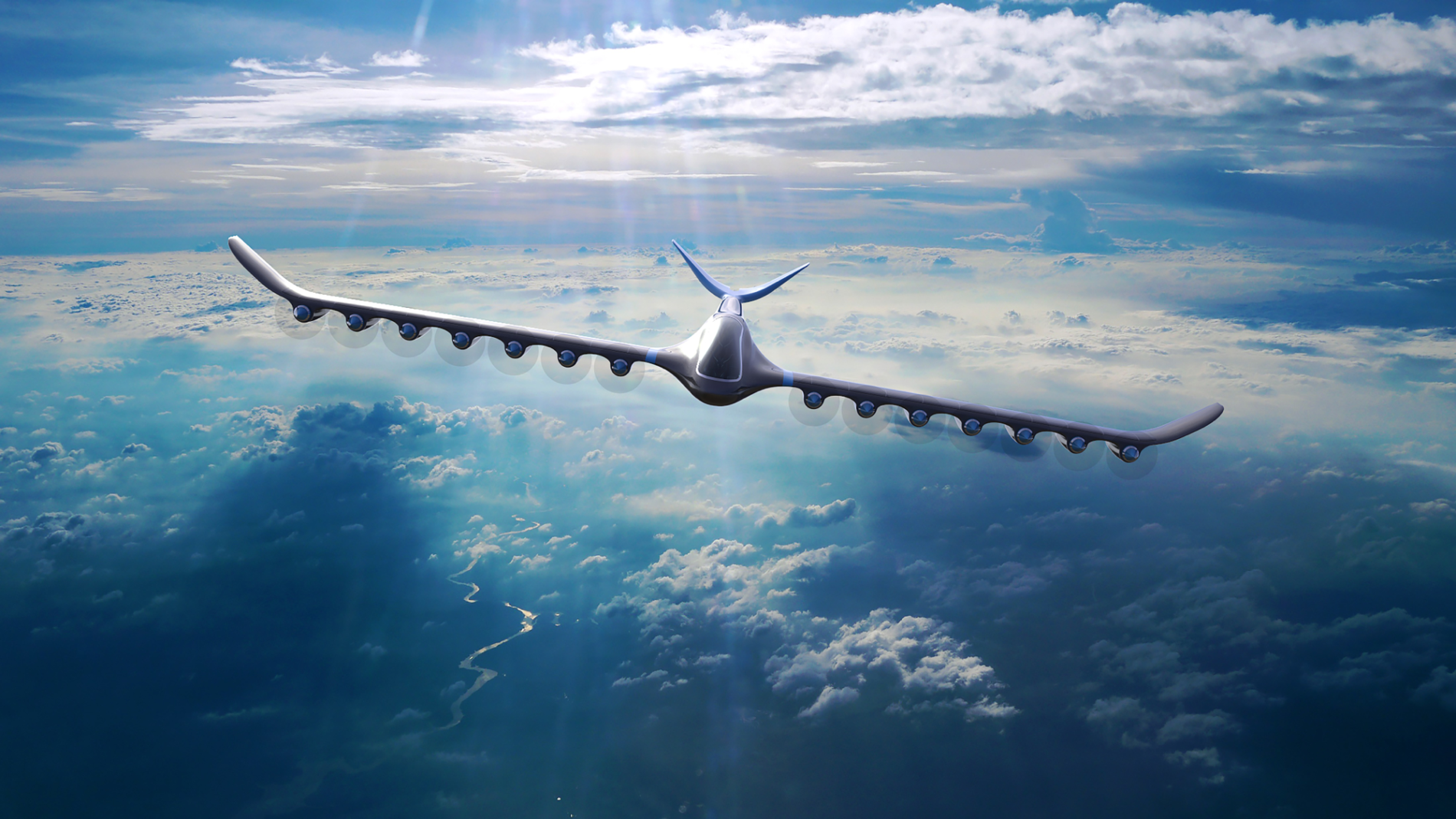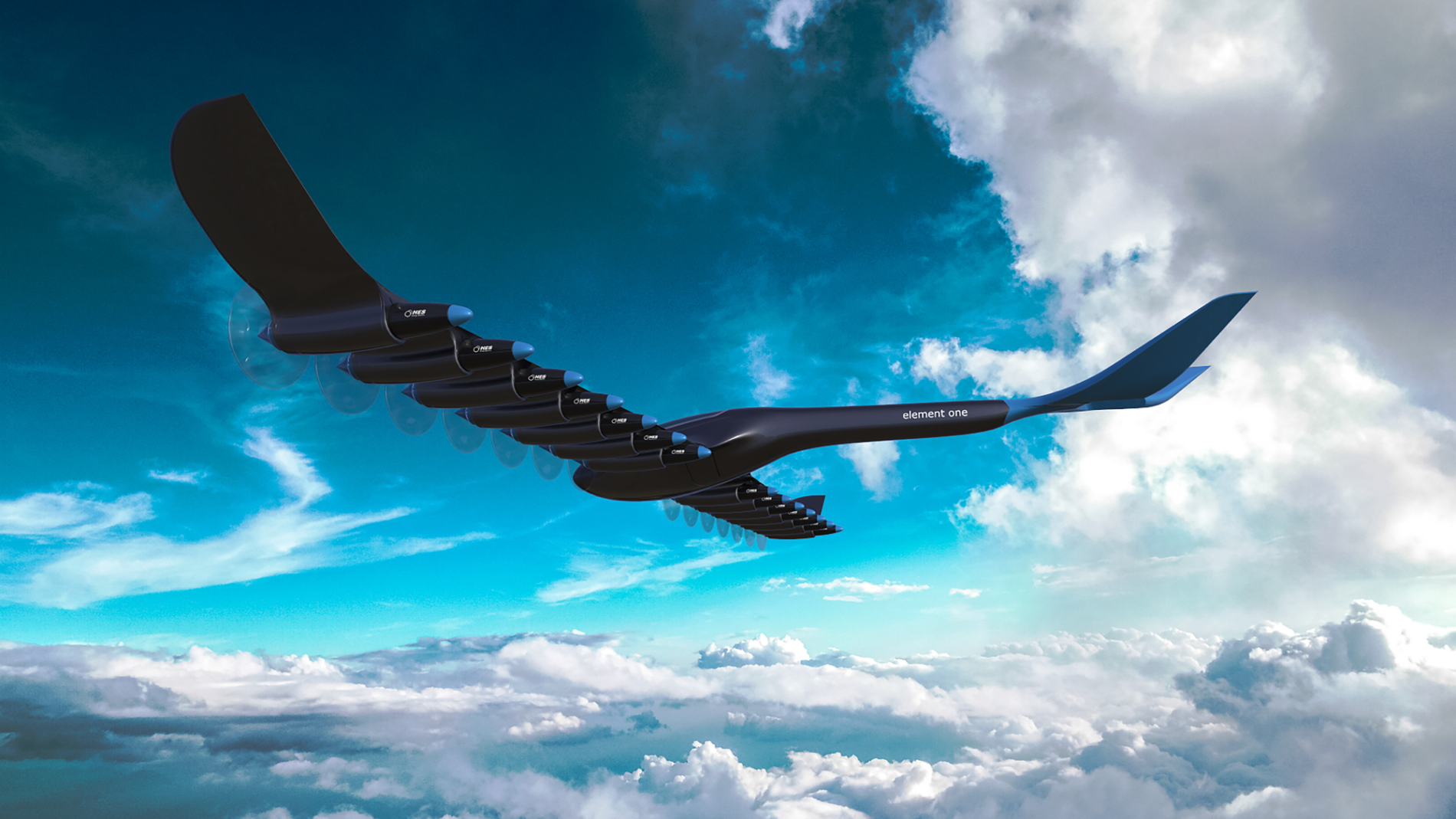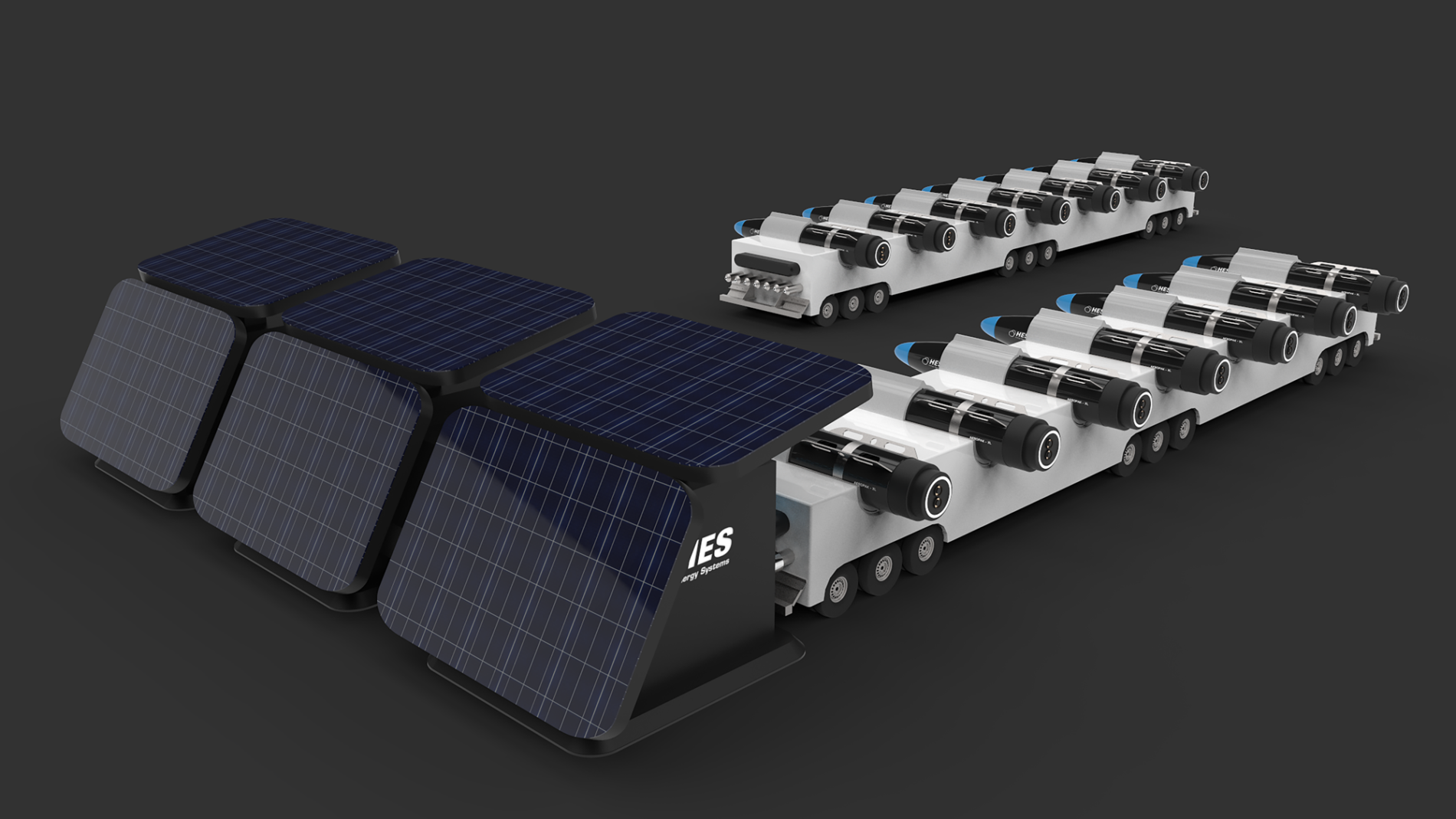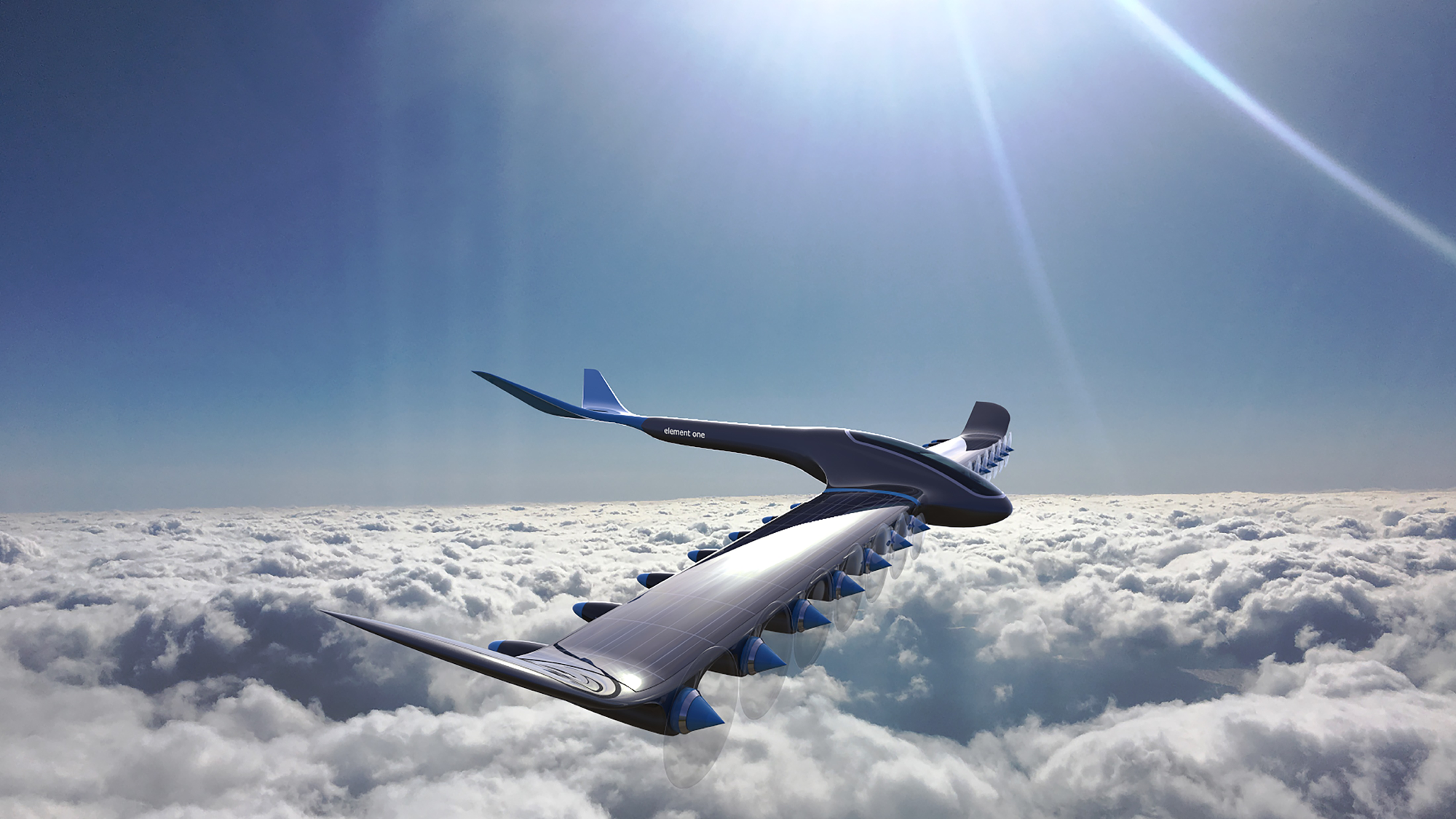HES, the French-Singaporean company that spent the last twelve years developing small hydrogen propulsion systems for unmanned electric aircraft is taking a big step forward by scaling up its technology to power a first manned electric aircraft the “Element One”. HES’ product offering began with smaller power systems for hydrogen-powered drones and unmanned fixed wing aircrafts; now those are being followed by larger ones. The decision to move to a larger hydrogen-powered aircraft seems to be a natural consequence of this evolution, especially as the existing power systems at HES are already capable of powering larger aircraft in a distributed propulsion approach.
The Element One is a small regional plane that could be a game changer in the aviation industry. The Element One design could currently host four to ten passengers and it will have a range between 500 and 5,000 kilometers – depending whether the hydrogen is stored in gas or liquid form. With its long-standing work in smaller aircraft, HES brings to manned aviation the invaluable benefit of combining increased flight time and reduced carbon emissions, a feature that only hybrid hydrogen-electric system can deliver. The plane will be developed in Toulouse, France, home of pioneering aviators and big aerospace companies including Airbus.
 IN THE PHOTO: The Element One, The Hydrogne-Powered Aircraft by HES.PHOTO CREDIT: HES ENERGY SYSTEMS
IN THE PHOTO: The Element One, The Hydrogne-Powered Aircraft by HES.PHOTO CREDIT: HES ENERGY SYSTEMS
The key technology of the Element One is HES’ “Aeropak” solution, a zero-emissions energy propulsion system capable of powering either drones or aircrafts. The Aeropak brings together the peak propulsion capability of power dense lithium batteries with the nominal cruise propulsion capability of a higher energy density hydrogen storage with its ultra-light fuel cells. Having a deep understanding of the opportunities and constraints of hydrogen as an ultra-light fuel source for electric flight attained over years of integration work, HES came up with a single standard all-inclusive hybrid hydrogen-electric propulsion system that can “click into wings” of either small drones or larger manned aircraft. The “Aeropak Energy Pods” are placed behind each small electric motor placed in a distributed fashion across the flying surfaces of the aircraft. As each pod is independent but linked together as a system, this approach increases the redundancy and safety of the aircraft. It also allows to swap empty for full energy pods on the tarmac and reducing aircraft time on the ground.
By using Aeropaks and distributed propulsion, autonomous flight and automatic airport operations, the Element One should be able to increase by 3 to 5 times the current capabilities of an electric aircraft, making regional electric aerial transportation a reality much sooner than expected.
 IN THE PHOTO: , HES’ Aeropak being installed on the Element One. PHOTO CREDIT: HES ENERGY SYSTEMS
IN THE PHOTO: , HES’ Aeropak being installed on the Element One. PHOTO CREDIT: HES ENERGY SYSTEMS
Before the first actual manned flight, HES is planning to run several tests. The first Element One is expected to be ready to fly in 2025, while in the next eighteen months HES is going to begin testing of a smaller scale unmanned aircraft with a single Aeropak on board. The test will include a symbolic flight to follow the legendary Aeropostale route from 1918 – From Toulouse in France to a destination that will soon be revealed.
Along with preparations for executing on its aircraft development, HES is now building a consortium of technology partners in both the Aerospace and Hydrogen industries to accelerate the development of a new decentralized travel model. HES already partnered with a number of fast-moving innovators with matching visions, including Wingly – a French startup that offers flight sharing services for decentralized and regional air travel – as well as ERGOSUP – a small developer of the innovative electrolyser capable of producing hydrogen from renewable resources. Its special electrolysers can generate hydrogen at high pressure without needing energy-intensive compressors, and therefore be deployed at the point of aircraft refueling – in small airports or aerodromes.
 IN THE PHOTO: Rendering of the Element One Flying. PHOTO CREDIT: HES ENERGY SYSTEMS
IN THE PHOTO: Rendering of the Element One Flying. PHOTO CREDIT: HES ENERGY SYSTEMS
HES is deeply concerned by environmental issues. HES parent company, H3 Dynamics, was recently chosen to become part of the World Alliance for Efficient Solutions set up by Solar Impulse Foundatio in Switzerland. The Alliance, brings together innovators and builders of a sustainable economy. HES’ sister company, H3 Zoom.Ai was awarded, in July 2018, with the prestigious Efficient Solution label, granted to processes and technologies that protect the environment in a profitable way;
With Element One, HES is encouraging the development of a new type of aerial mobility for remote territories: this should enhance the development of local economies and help to decentralized activities powered by local renewable energy sources. By connecting secondary cities and regions it will be possible to accelerate communications between small communities and creates opportunities to reduce global pollution impact on the planet. It will also help revitalize countrysides and smaller towns which have lost ground to much bigger cities and country capitals.


